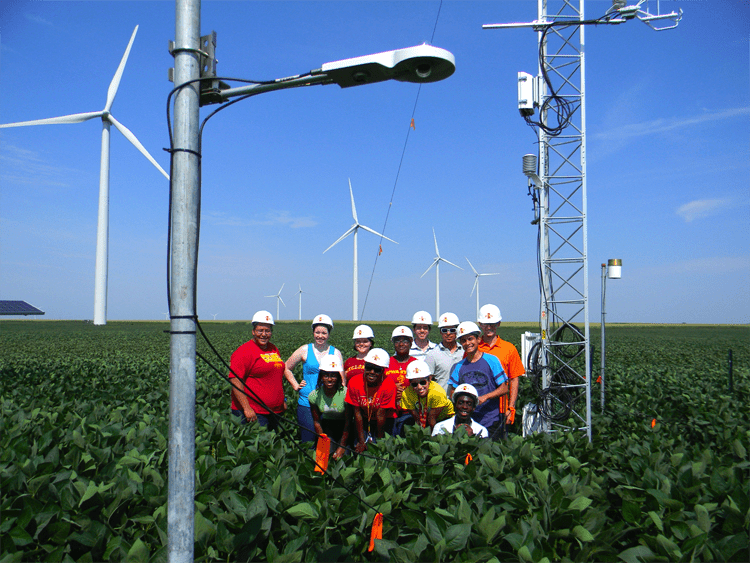It amazes me when I hear people say they’re against wind turbines because … wait for it… they’re ugly. If you think the same, please get a look at this. Others hate them because they have this misguided impression they’re noisy. Well, modern turbines at least are quieter than a heartbeat. If you really want to make a case against wind turbines, you could argue they’re bad for wildlife and you’d be right. Birds, bats and other winged creatures are sometimes attracted by the turbines or get slashed when these are in the way of their migration patterns. This is why I believe turbines should be built only in those areas where there is minimal interference with wildlife. They’ll always be downsides to any technology or infrastructure development, but when you draw the line we must be objective whether or not the benefits tip the scales. There’s also another added benefit to turbines you likely never heard about: they help crops grow faster and better when they’re placed on farmland.

Iowa State students from the College of Engineering’s Summer Program for Enhancing Engineering Development (SPEED) program pose near wind turbines and meteorological towers on an Iowa windfarm. Photo: IOWA EPSCOR
At Iowa State University, the new Wind Energy Student Organization started its first presentation with a talk by adviser Dr. Gene Takle, who’s been studying the effects of wind turbines on climate and wind turbulence.
“One of the effects of turbines is they stir the air, so the crop, the corn canopy itself is drawing down the carbon dioxide level in that part of the atmosphere so within the crop it’s getting lower and lower, so the extra turbulence brings down this higher CO2 air from above and promoting more photosynthesis within the crop during the daytime period. So it’s a good thing and it looks like the turbines from our measurements are actually having a beneficial effect,” Tackle said.
Besides this, the wind turbines also increase nighttime temperatures, decreased daytime temperatures, and enhanced evaporation. On the downside, the turbulence also increase respiration. Wind turbines are also great for the local economy, since farmers get a new revenue stream from leasing their lands.
“Wind turbines represent an alternative income stream for farmers. Farmers are in a very volatile economy, there’s up years, there’s down years. The turbines provide the same lease amount every year. So it provides some stable income, which is often valued by farmers. They don’t take very much land out of production and from what we’ve shown, they don’t have any negative impact on their farming operation. Possibly even a positive impact,” according to Tackle.
The state of Iowa has seen massive developments in wind power recently. Nearly $10 billion have been invested thus far, and another $10 billion are slated for the next five years. According to the Office of Energy Efficiency and Renewable Energy, by 2030, lease payments will generate well over $600 million for landowners in rural areas in the U.S.









